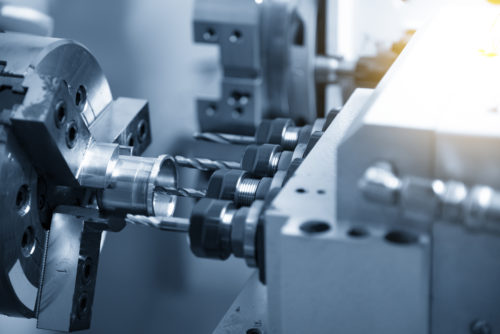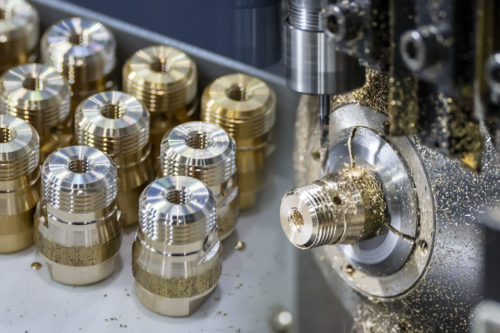Advantages of Swiss Turning and Machining
Leave a CommentOver the past several years, Swiss-type machining and turning have grown in popularity across a range of industries. This surge in popularity is due in large part to companies discovering the various benefits that this type of machining offers over traditional machining methods.
Swiss Turning vs. Conventional Turning
Swiss turning offers a cost-effective way to produce small, complex components at high volumes and with excellent precision. Compared to conventional turning methods, Swiss turning features the following differences:
- Headstock. One of the biggest differences between Swiss turning and conventional turning involves the headstock. Conventional turning has a fixed headstock that holds the workpiece as the cutting tool moves, whereas Swiss turning utilizes a sliding headstock, which feeds the workpiece through a guide bushing past the stationary cutting tool.
- Guide bushing. Swiss-type lathes feed the stock through a guide bushing, meaning the OD turning tool can cut the stock very close to the bushing. This allows Swiss turning to be particularly effective for long and slender turned parts. Conventional lathes hold the workpiece in the collet of the main spindle, which is not suitable for long parts.
- Capability. Traditional lathes typically feature 3 or 4 axes and are unable to machine a turned component in one cycle. Swiss lathes can perform multiple functions in one cycle thanks to its 5-axis capabilities.
- Cycle Time. Swiss lathes significantly reduce cycle times, especially when machining extremely complex components.
- Coolant. For conventional turning, water is often used as a coolant. Swiss types use oil as the coolant for enhanced lubricity.
 Benefits of Swiss Turning
Benefits of Swiss Turning
Swiss CNC machining offers a wide range of benefits over traditional machining operations. These benefits include:
- Capable of achieving extremely tight tolerances for complex components
- Short set-up times
- Performs milling, drilling, sawing, and other operations, eliminating the need for secondary processes
- Can produce small, intricate components in a single cycle
- Produces an excellent surface finish
- Less vibration and tool deflection than traditional lathes
- High-volume capabilities
- Can run unattended for hours at a time
These many advantages have made Swiss turning a popular machining method for various industries, including watch-making, medical, aerospace, electronics, and more.
Swiss Turning and Machining from Buell Automatics, Inc.
With over 50 years of experience designing and manufacturing small precision parts and components, the experts at Buell Automatics have the knowledge needed to deliver custom-tailored solutions that accommodate the needs of customers across a range of industries. Our CNC Swiss turning capabilities allow us to deliver complex components that adhere to the tightest tolerances, whether you require a prototype or high-volume production.
For more information about our Swiss turning services, request a quote from our expert team today.






 Benefits of Swiss Turning
Benefits of Swiss Turning